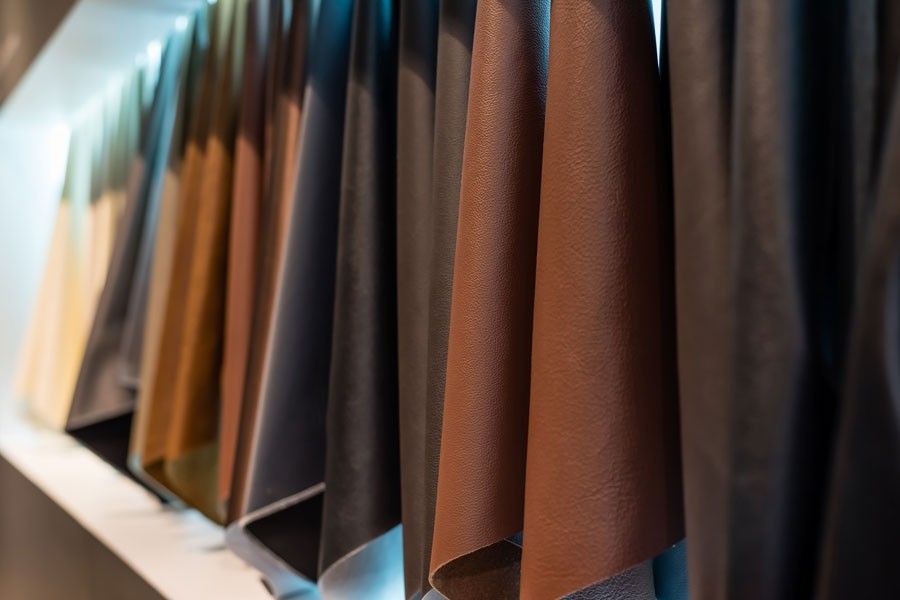Formation of a taskforce by the government to suggest remedies to remove barriers impeding export of leather and leather goods has nonetheless brought to the fore the long overdue concern over one of the country's prime export products. For an insider, news of the taskforce hardly makes sense. For the government, however, it's an attempt to take side with the industry that for long is in wait to kick off as a key driver of the economy. Although it sounds rather harsh that the country's leather sector is dwindling, the fact remains that lackluster government moves, made worse by absence of proactive plans, have already dug deep ruts on its path of becoming what it was meant to be.
Coming to the point, reports say the government has formed the taskforce headed by the industries minister to formulate an action plan and make recommendations for the country's leather sector in an attempt to ride out the prevailing stagnant export situation. The Cabinet Division formed the 29-member taskforce comprising ministers of commerce and environment, state minister for industries, chairman of the National Board of Revenue and leather sector representatives to evaluate the present situation in the sector, according to a gazette notification issued on October 2. The taskforce would identify the existing problems in the sector and suggest solutions, it said. It would formulate recommendations on development, market expansion and increasing export. The taskforce would prepare guidelines on how to achieve international compliance and standards by following environment laws and related rules. It would also work to explore new potential markets, strengthen the existing ones as well as adopt work plan to encourage new innovations and business start-ups and best practices.
So much for the government gazette notification. There is nothing encoded in it to cause pains to make sense. More so, it seems the taskforce has a magic wand the touch of which would unpick the complex knot called 'problems of leather sector' and also sort a way out with quick solutions! Clearly this scribe is disillusioned about the government's role. So summoning up hope for quick improvement through the taskforce looks like an over-ambitious project, to say the least.
The leather sector over the years has suffered more misery than any other in the country due to sheer insensitivity and negligence of the authorities. The problems in exporting that have been emerging in recent times, causing drastic decline, are for the most part attributable to government's indecisions, even grossly wrong decisions. Not to speak of proactive plans, the long sequence of events -- including the many twists and turns -- around the tannery hub relocation from Hazaribagh to Savar, the callous and limping progress of work of the leather industrial park, the infamous central effluent treatment plant (CETP) brings forth the dismal narrative of the country's leather sector. How does one explain the inordinately long time -- sixteen years to be precise -- that took for the industrial park to be constructed? Work on the 200-acre park in Savar that started in 2003 is yet to be complete. One of the main components, the CETP is still not functional, reportedly because of imperfect design and flawed work order given to the foreign contractor. Repeated assurances from the supervising body Bangladesh Small and Cottage Industries (BISCIC) that things are going to be set right soon have only added to the frustration of the tannery owners who were forced to move their establishments from Hazaribagh to Savar around two years ago. Besides the CETP, work on the dumping yard for disposing corrosive solid waste has reportedly not yet begun.
Observers believe that the lingering uncertainty over the industrial park which for all practical purposes is supposed to be the nerve centre of the country's leather industry has contributed hugely to the prevailing stagnation in exports. A sector representative told the media the other day that management of the central effluent treatment plant and solid waste is the major problem for the leather sector people who relocated their units to the leather industrial estate at Savar. That is to say, had they not been compelled to move from Hazaribagh, given the unfinished state of the Savar estate, things would not have turned this bad. This also goes to explain the utter ignorance of the authorities which probably had considered physical relocation the end of the job.
It has been learnt that a good number of international buyers, especially from the EU and the US, who used to procure leather and leather goods from the country have moved to other exporting countries. Respective country-compliance norms of importing countries and increasing international pressure not to procure from environment-unfriendly sources (like the Savar estate, as it is now) have left very few choices for the exporters to access overseas markets. China, however, is still procuring from Bangladesh, though at lesser prices than offered years back.
Leather is one of the country's key export products. But despite its immense growth potential it has not been able to shine at all but for tiny blips. Some late-entrants like Vietnam and Cambodia are doing far better in this sector. Vietnam's export, for example, now stands at $20 billion a year, while that of Bangladesh shockingly hovers around $1 billion.
Let's wait to see if the task force can bring something to really look up to.


